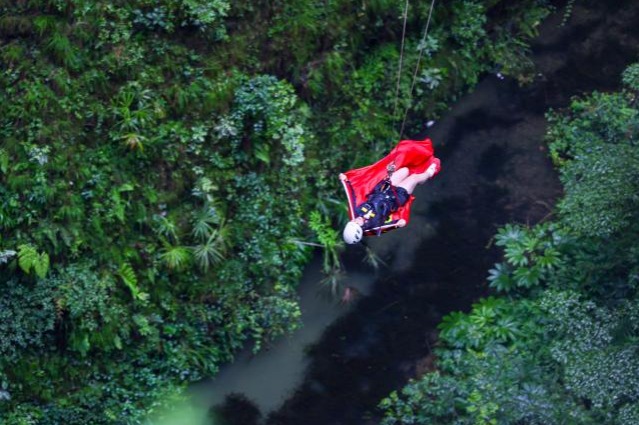Efforts by Shenzhen and Hong Kong are keeping river clean






On a typical Sunday morning at his home in Shenzhen, Guangdong province, Tang Guisheng opens the curtains, looks out of the window and enjoys watching the dozens of birds standing across the clean, winding Shenzhen River. This is the best time of the day for him.
Tang, 56, has been living by the river for over 30 years. Though he likes what he sees when he looks out his window these days, the scene wasn't so beautiful 30 years ago.
The Shenzhen River is the boundary waterway between Shenzhen and Hong Kong that flows into Shenzhen Bay from northeast to southwest.
About 60 percent of the river flows on the Shenzhen side, and the rest in Hong Kong.
With the industrial development of Hong Kong and the establishment of the Shenzhen Special Economic Zone, the river was badly polluted.
"The river was dirty, the water stank and fish could hardly survive," Tang recalled.
Since the 1980s, Shenzhen and Hong Kong have collaborated on the environmental monitoring and sewage treatment of the river, and they have ramped up their efforts in recent years.
Shenzhen has been constantly increasing investment in sewage treatment and implementing engineering measures such as sewage collection, rain and sewage diversion and original source cleanup.
Since 2016, the Shenzhen government has spent over 12.5 billion yuan ($1.8 billion) on the river; it has implemented more than 80 major projects, has established sewage collection pipelines running 409 kilometers and has completed 2,044 community transformations.
Meanwhile, the Hong Kong Special Administrative Region government has launched a series of projects, including sewage collection in the northern New Territories, livestock waste control and poultry farm completion subsidies.
To effectively tackle water pollution, regional restrictions need to be relaxed "to achieve effective cross-regional cooperation," said Liu Jiaqi, director of the research center of environmental resources and energy law at Liaoning University.
"Adopting a joint sewage treatment mechanism between Shenzhen and Hong Kong follows the basic ecological laws of the basin, playing the effect of 'one plus one is greater than two'."
According to the Environmental Protection Department of the HKSAR, the Hong Kong and Guangdong governments formulated a joint implementation program in 2000 to improve the river's water quality through a series of pollution control measures.
The JIP has been reviewed regularly to check on its progress, effectiveness and the need for additional measures.
It is a landmark achievement in cross-boundary environmental cooperation between two cities sharing common water bodies to which visible and sustainable improvements are made possible despite differences in land use strategy and landscape on opposite banks, the department said.
In addition, the two governments have been exploring options to further mitigate environmental problems associated with contaminated sediment in the Shenzhen River.
They have cooperated in managing the aquatic environment, including sharing water quality monitoring data, pollution control information and their experiences in pollution reduction as well as exchanging knowledge of advanced technology.
Data from the Shenzhen water authority showed that in 2019, the river's water quality during the dry season reached Grade V-meeting the national standard of agricultural water and general landscape water.
With improved water quality, the river has seen many rare migratory birds, such as the black faced spoonbill, return to roost.
"Nothing can be more cheerful than seeing these creatures return to the Shenzhen River," said Zhu Zhu, secretary-general of the Shenzhen Spring Environmental Protection Volunteer Association.
Next, a joint Shenzhen-Hong Kong ecological protection mechanism and related work groups will be established, further promoting cooperation between the two sides, according to the Shenzhen water authority.
Liu suggested that on the basis of controlling the discharge of pollutants, it is also important to give attention to wetlands restoration, nature reserve construction, lake desilting and ecological afforestation to further enhance sewage treatment of the river.
Kathy Zhang contributed to this story.
- Young innovators compete to build a better global governance system
- Beijing issues rainstorm alert, activates flood control response
- SCO members explore green energy cooperation potential in Tianjin
- Senior Guizhou official under investigation for suspected discipline violations
- Shanghai experiencing big growth in tourist visits
- Science competition displays skills of Chinese youth at Shanghai University

































